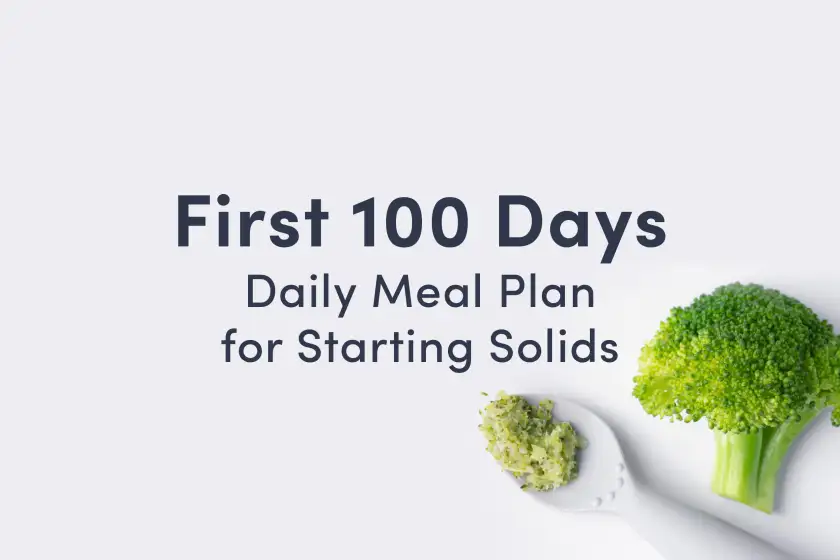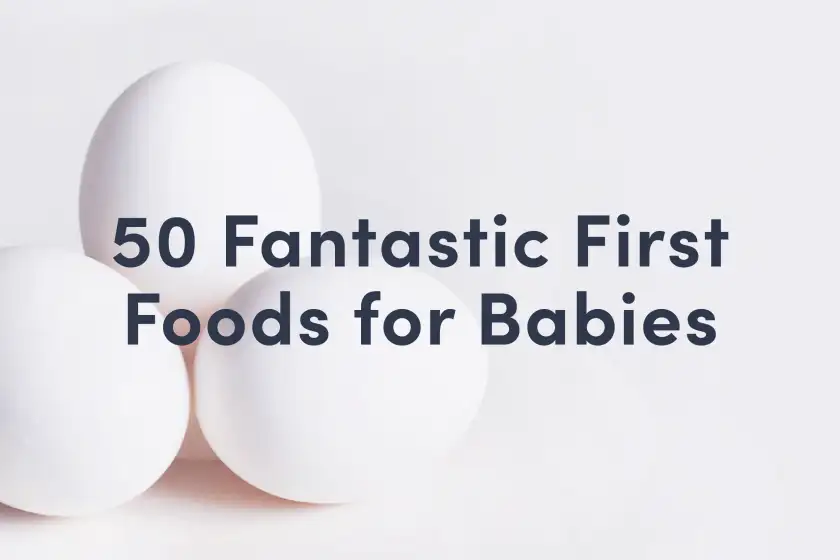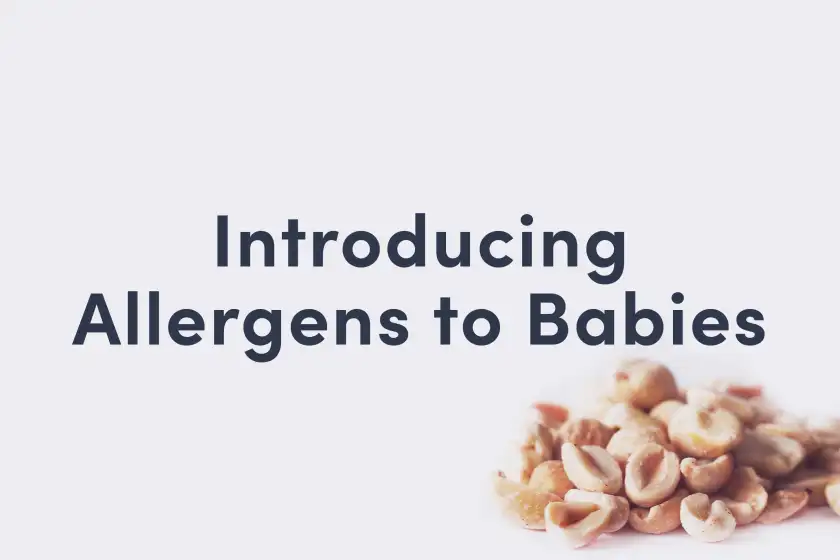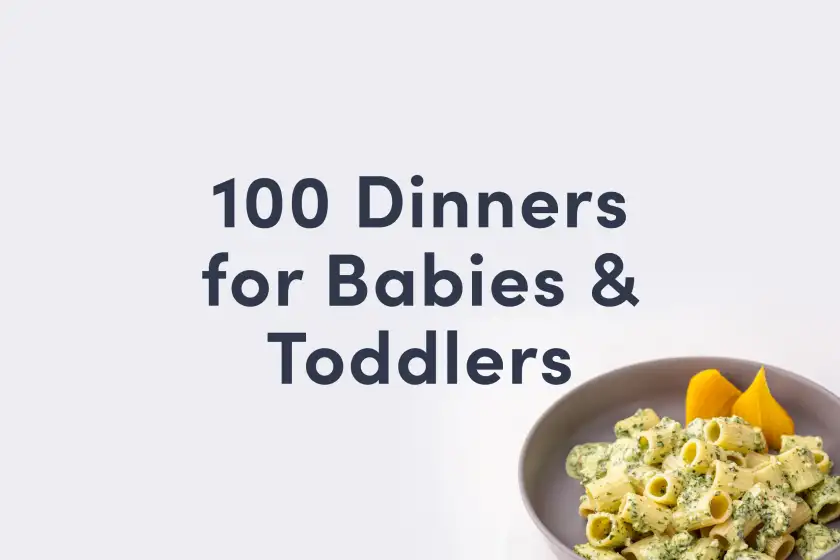Lobster
Shellfish
Age Suggestion
12 months
Iron-Rich
No
Common Allergen
Yes
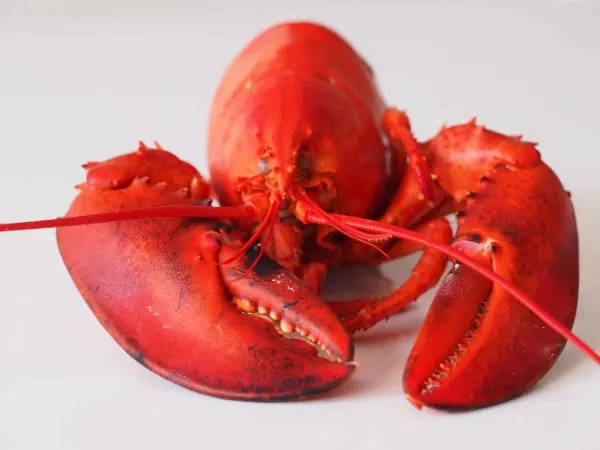
When can babies eat lobster?
Fresh or frozen lobster meat (not canned, cured, imitation, or raw) that’s been cooked and finely chopped can technically be introduced as soon as your baby is ready to start solids, which is generally around 6 months of age. However, it is our opinion that it is best to introduce lobster after your baby’s first birthday as it can be high in sodium, which is best limited in baby's diet. Early and excessive exposure to sodium is also thought to play a role in cardiovascular disease, hypertension, and obesity.
Recommended Guide: Fish for Babies
Videos
Is lobster healthy for babies?
Lobster meat can be a nutritious meal for a child when it is served in moderation. Lobster is high in vitamin B12, copper (essential for iron absorption) and selenium (supports baby’s immune system and DNA growth). Lobster is also an excellent source of protein and omega-3 fatty acids, which are essential for brain development. There is also a good amount of dietary cholesterol which, contrary to popular media, is super important for cell integrity (and will not increase your baby’s total cholesterol levels).
There are considerations to weigh before serving lobster to your baby, however. Lobster, like many shellfish, contain sodium, which, in excess, is not good for babies or adults alike. Further, like all ocean fish, lobster contains toxins as a result of water pollution, including traces of mercury, which can have devastating effects on our central nervous and neurological systems, particularly in babies and young children. Lobster is categorized as a “moderate risk” seafood in our Best & Worst Fish for Babies guide. Note that spiny lobster (also called “rock lobsters”) have less mercury than North American lobsters.
It is alarming to think of a child eating anything containing mercury, but the reality is that in this day and age, there are toxins in so many of our foods. That’s why when it comes to seafood, the old adage “all things in moderation” is a good rule of thumb for adults and babies alike. When served as an occasional treat, lobster can be a real treat for the whole family.
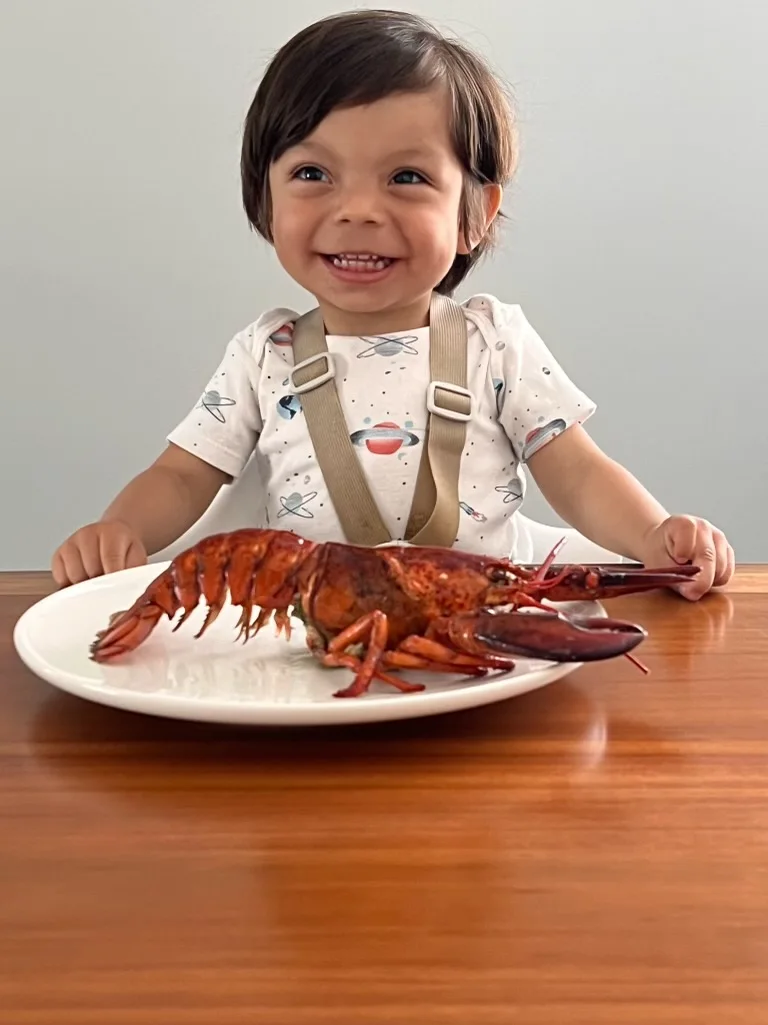
Is lobster a common choking hazard for babies?
Yes. Lobster—and especially the claws—can be tough for little babies to chew, and it’s easy for them to accidentally swallow a piece that is too big. If your baby is younger than 18 months, or has not mastered chewing and swallowing, finely chop cooked lobster meat and mix it with another ingredient, such as mashed potatoes. Alternatively, use the finely chopped lobster meat to make a fish patty.
For more information, visit our section on gagging and choking and familiarize yourself with common choking hazards.
Is lobster a common allergen?
Yes. Lobster is a shellfish, and shellfish are among the most common of food allergens. Shellfish is also an allergy that most kids do not outgrow. If you have a family history of allergies, or suspect your baby may be allergic to fish, consult an allergist before introducing lobster.
As with all new foods, introduce by serving a scant quantity of cooked lobster and watch closely as your baby eats. If there is no adverse reaction, gradually increase the quantity over future servings.
What is the best lobster for babies?
Spiny lobsters, as they are lower in mercury than North American / Maine lobsters. That said, unless you are eating lobster frequently, either lobster type is fine in small quantities now and then.
What is the difference between lobster types?
There are two basic types of lobsters: cold water and warm water, or spiny lobster. While warm water lobsters are higher in iron, selenium, and zinc, they are slightly lower in copper, sodium, and omega-3 fatty acids, so it’s difficult to rank one species above the other when it comes to nutritional value.
The main differences are their shape and habitat. Cold water lobsters have claws; warm water lobsters do not. Warm water lobsters live in coral reefs and sea grass habitats within tropical waters in the Atlantic and Pacific Oceans, while cold water lobsters live in coastal areas throughout the Northern Hemisphere. Both species are nocturnal bottom feeders who like to keep to themselves and scavenge dead sea creatures, tiny fish, and mollusks who inhabit the ocean’s seabed. They’re also slow-growing: it takes about seven years for a lobster to grow to its legal harvesting size in the United States.
Lobsters shed their shells as they grow, which is why they are sometimes marketed as “soft shell” lobsters at fish counters. The shedding happens during warm weather, and soft-shell lobsters do not keep for more than a day after their catch. This is partly why you see lobsters “on sale” at low prices while vacationing in areas with a thriving lobster fishing industry.
Like so many other seafood, some lobster populations are under threat of being overfished. Population decline is not just a bummer for parents who want to introduce lobster and help their baby learn to love the taste. Overfishing has a major ripple effect on the health and well-being of our ocean’s ecosystem and creatures who depend on the food supply. To make matters worse, some fishing methods seriously disrupt our oceans’ seabeds and negatively impact coral reefs, coastal ecosystems, and other sea creatures, which are caught as “bycatch” while fishing for the desired lobster. A widely-respected go-to resource, the Monterey Bay Aquarium Seafood Watch recommends avoiding many international sources of spiny lobsters in the Caribbean Sea and Gulf of Mexico because of these environmental impacts and more.
How do you prepare lobster for babies with baby-led weaning?
Every baby develops on their own timeline, and the suggestions on how to cut or prepare particular foods are generalizations for a broad audience.
6 to 12 months old:
Avoid due to sodium levels or offer the smallest bits of finely chopped or shredded lobster for your baby just to taste.
12 to 18 months old:
Lobster meat must be cooked, removed from the shell, and finely chopped or shredded for the shellfish to be safe for babies and toddlers. Incorporate shredded lobster in pastas, risotto, on its own, mixed with mayonnaise or butter or in the form of a patty.
18 to 24 months old:
Once your baby reaches 18 months of age or becomes an advanced eater with established chewing and swallowing skills, you may serve lobster in larger pieces for them to experiment with.
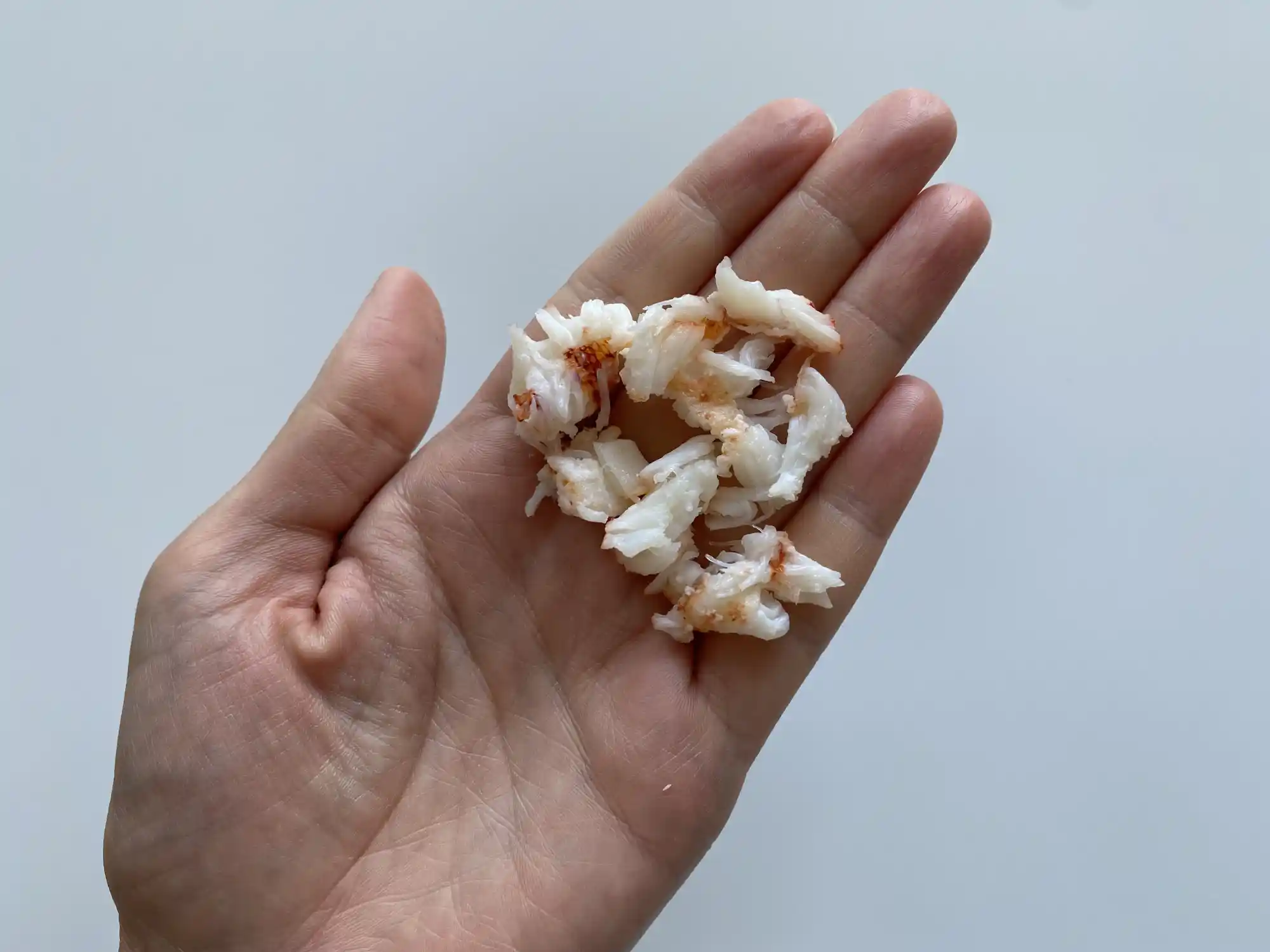
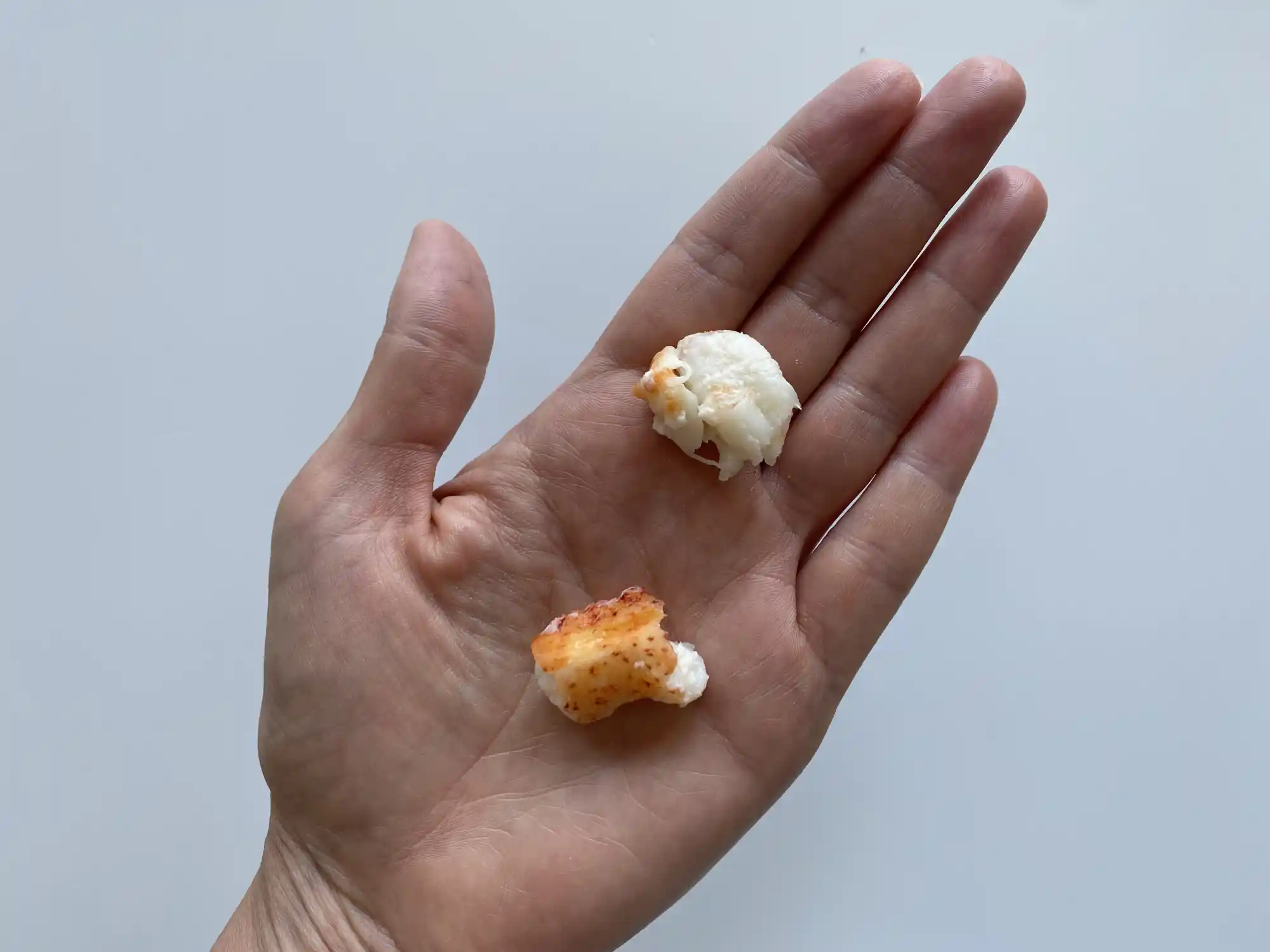
When purchasing a whole lobster, look for one that is smaller in size and weighs around 1 pound. Smaller lobsters will have more tender meat than their larger, older cousins.
For more information on how to cut food for babies, visit our page on Food Sizes & Shapes.
Written and reviewed by these specialists
Expert Tips Delivered to Your Inbox
Sign up for weekly tips, recipes and more!
The content offered on SolidStarts.com is for informational purposes only. Solidstarts is not engaged in rendering professional advice, whether medical or otherwise, to individual users or their children or families. No content on this site, regardless of date, should ever be used as a substitute for direct medical advice from your doctor or your medical or health professional, nutritionist, or expert in pediatric feeding and eating. By accessing the content on SolidStarts.com, you acknowledge and agree that you are accepting the responsibility for your child’s health and well-being. In return for providing you with an array of content “baby-led weaning” information, you waive any claims that you or your child may have as a result of utilizing the content on SolidStarts.com.



